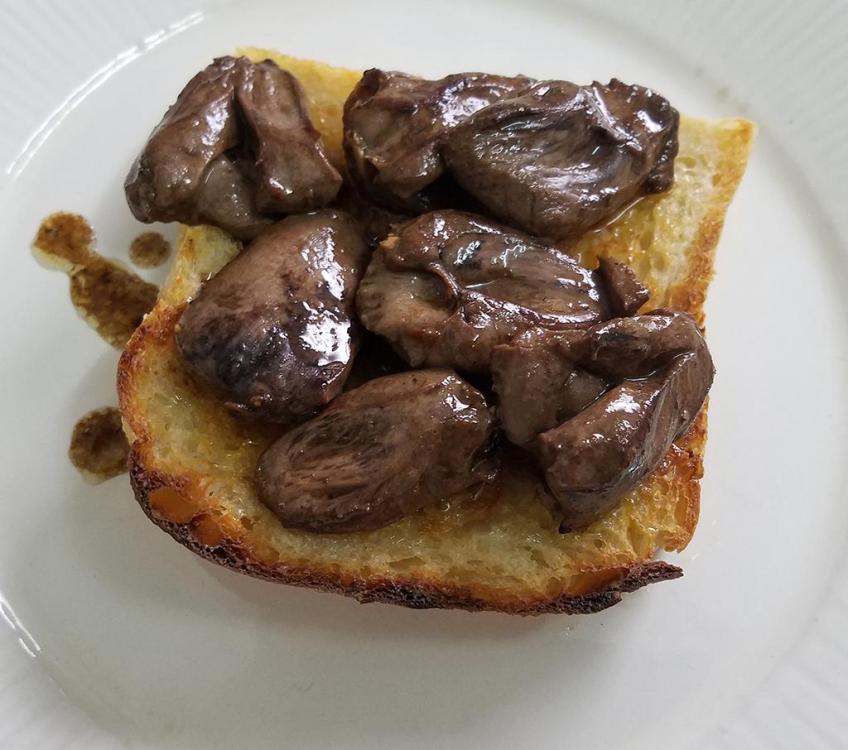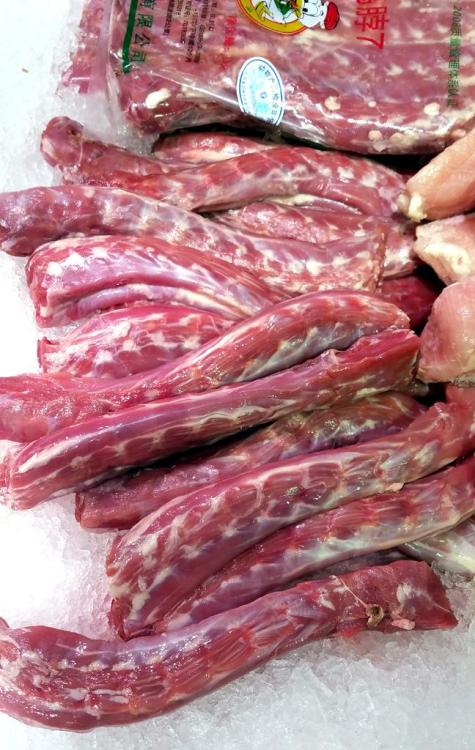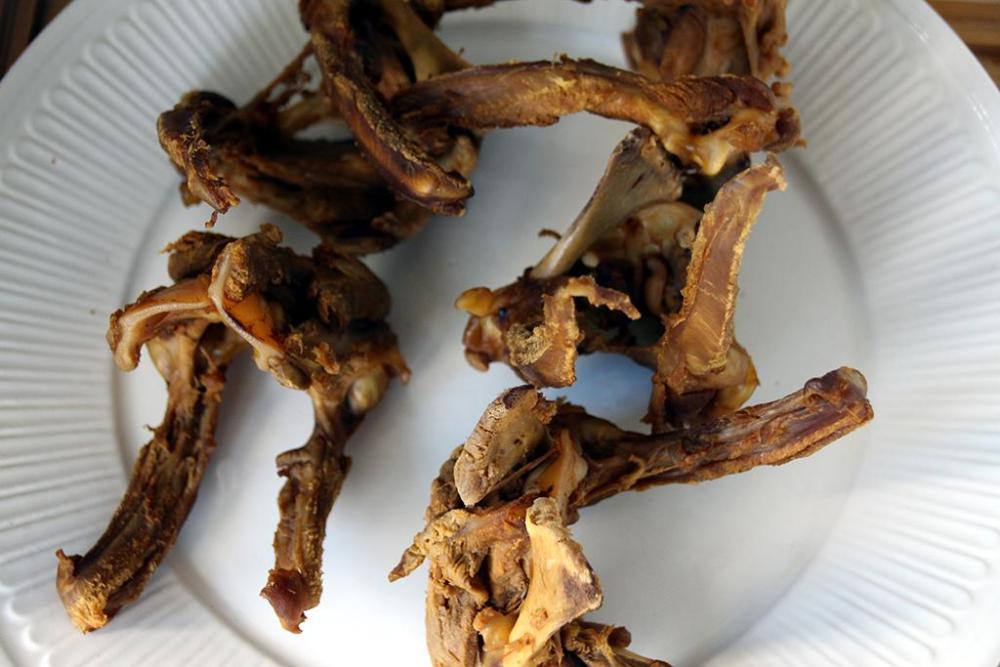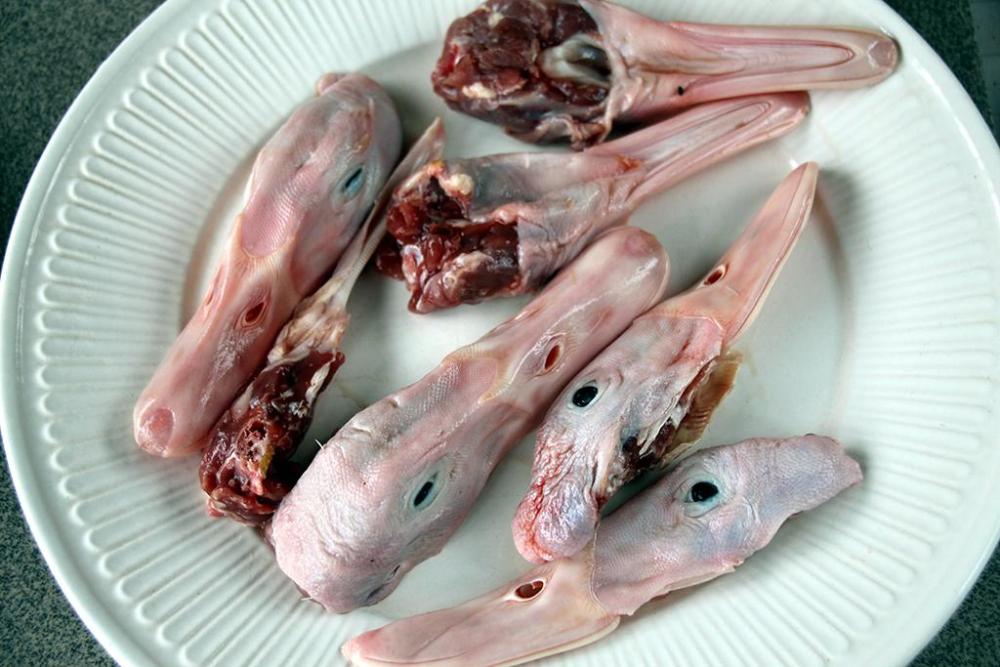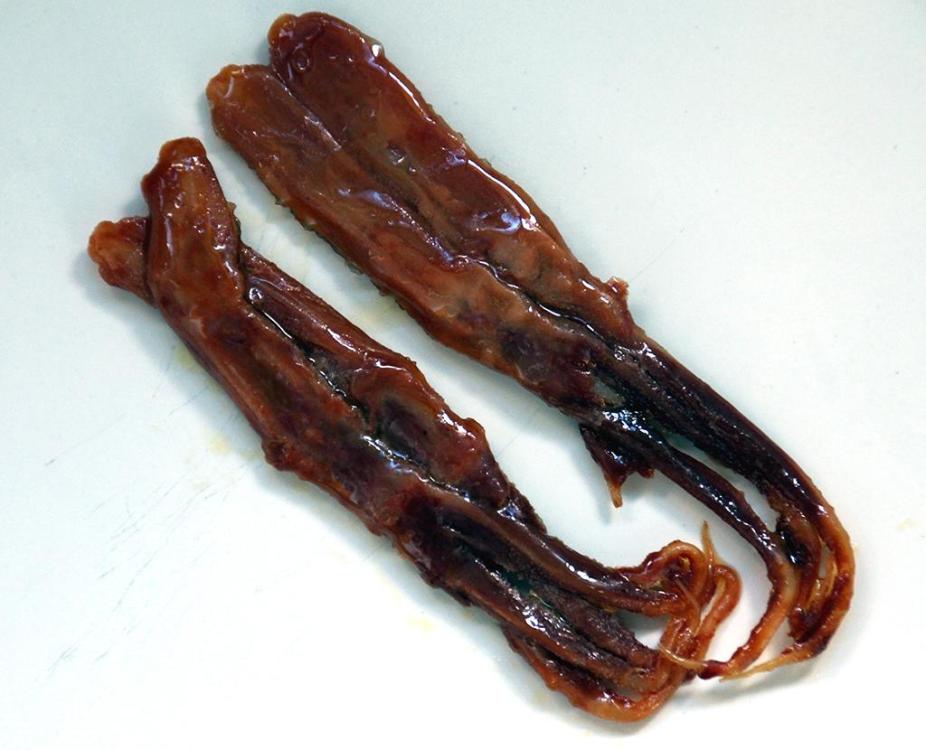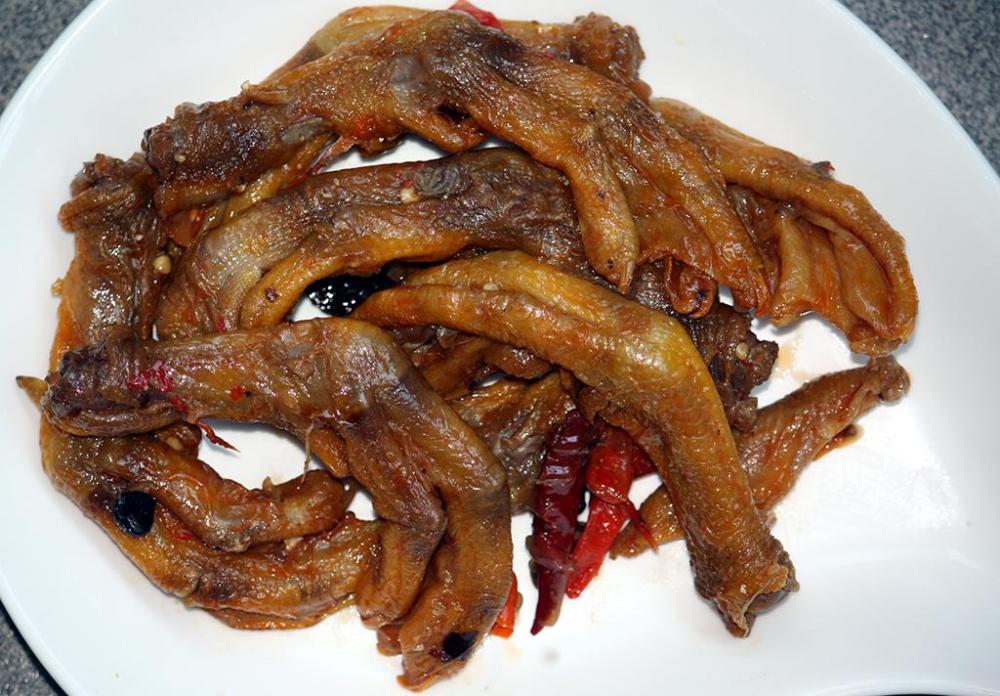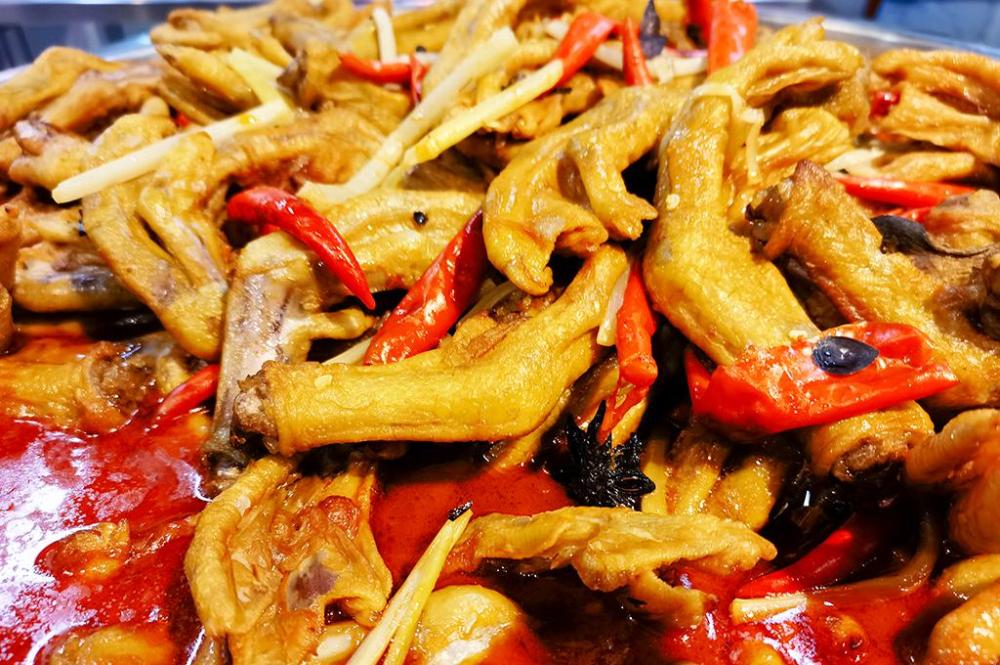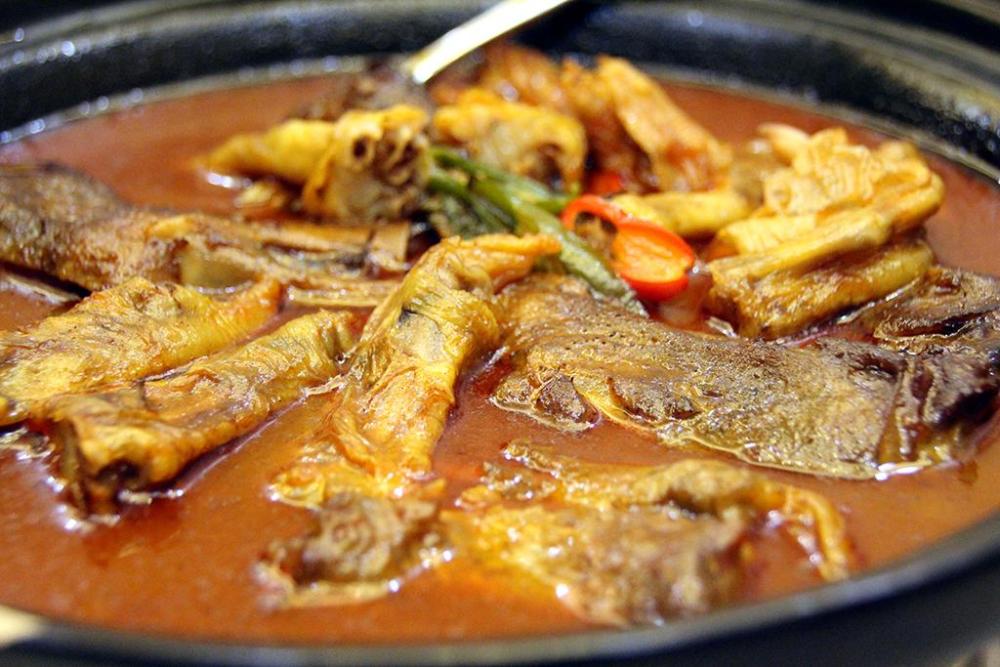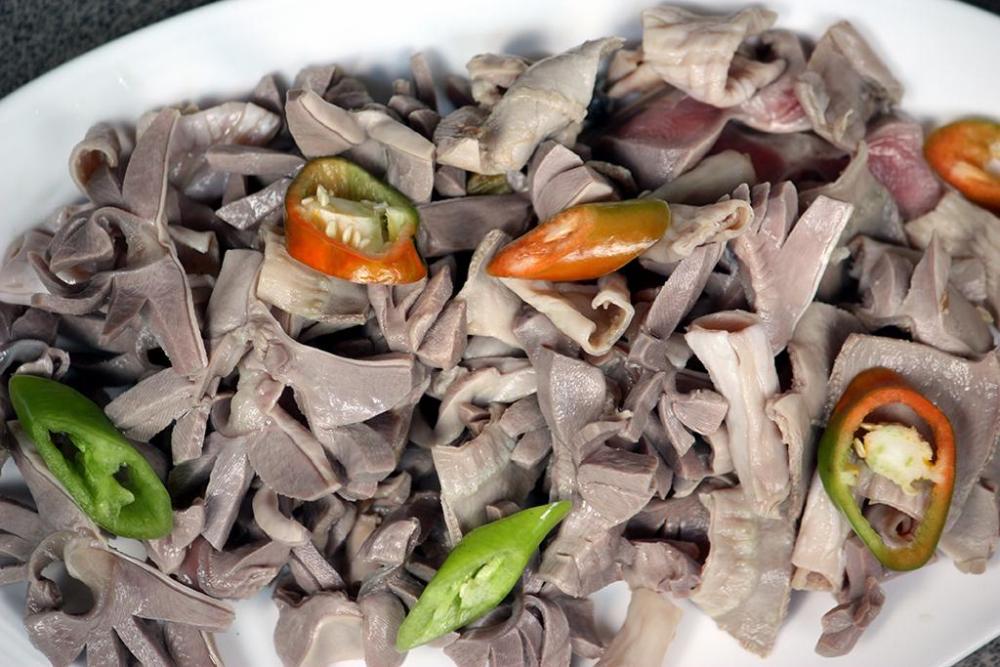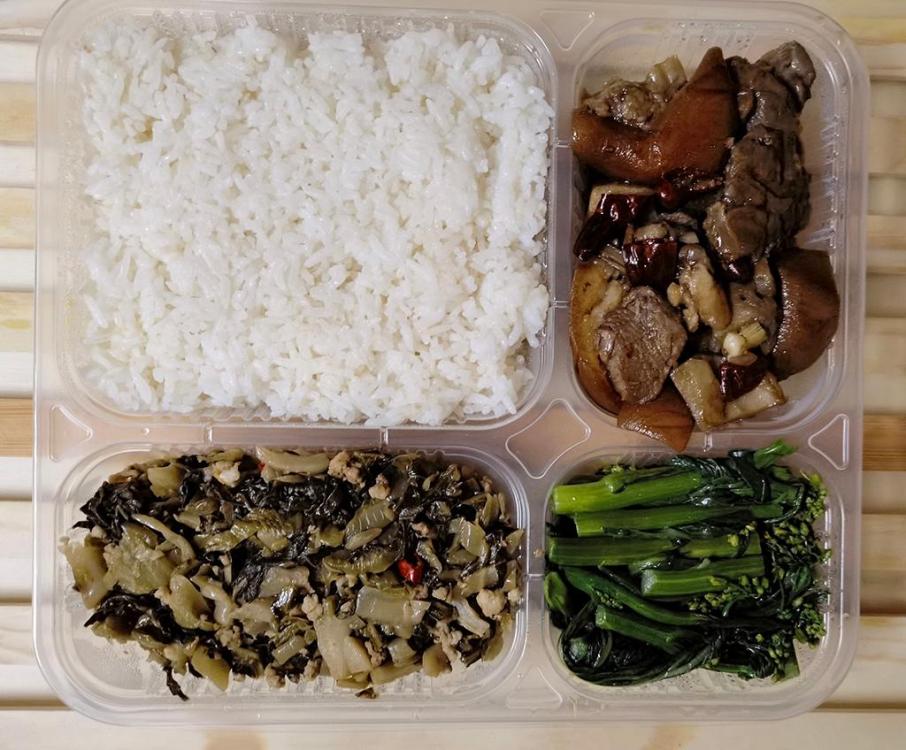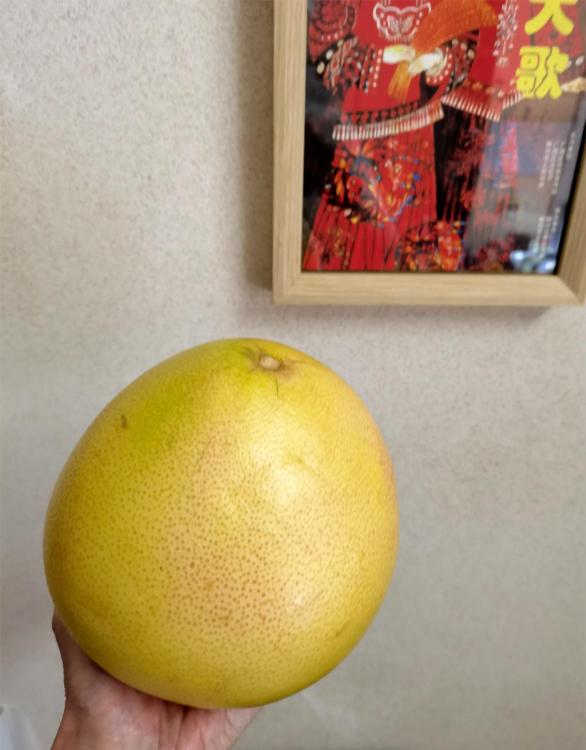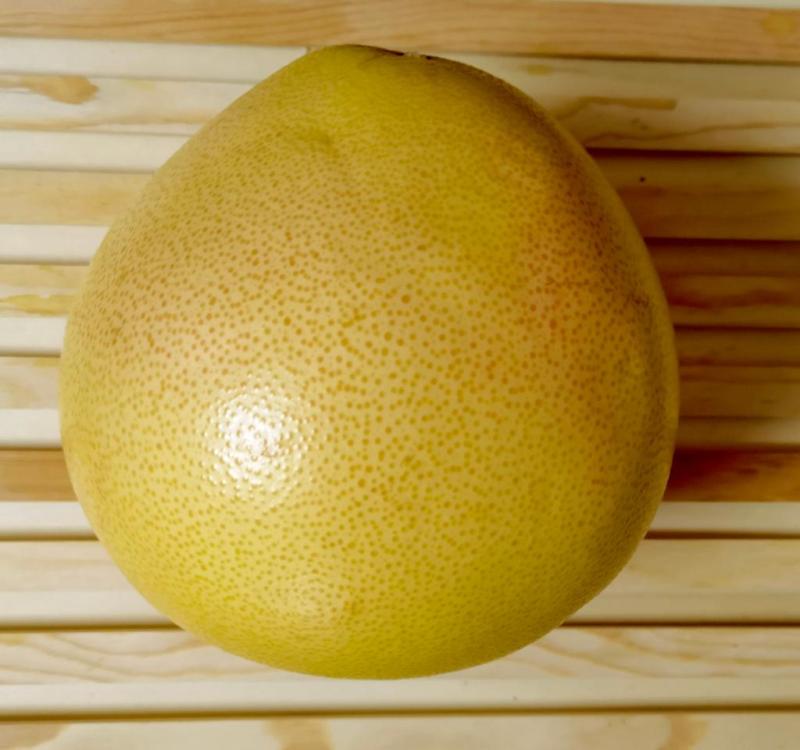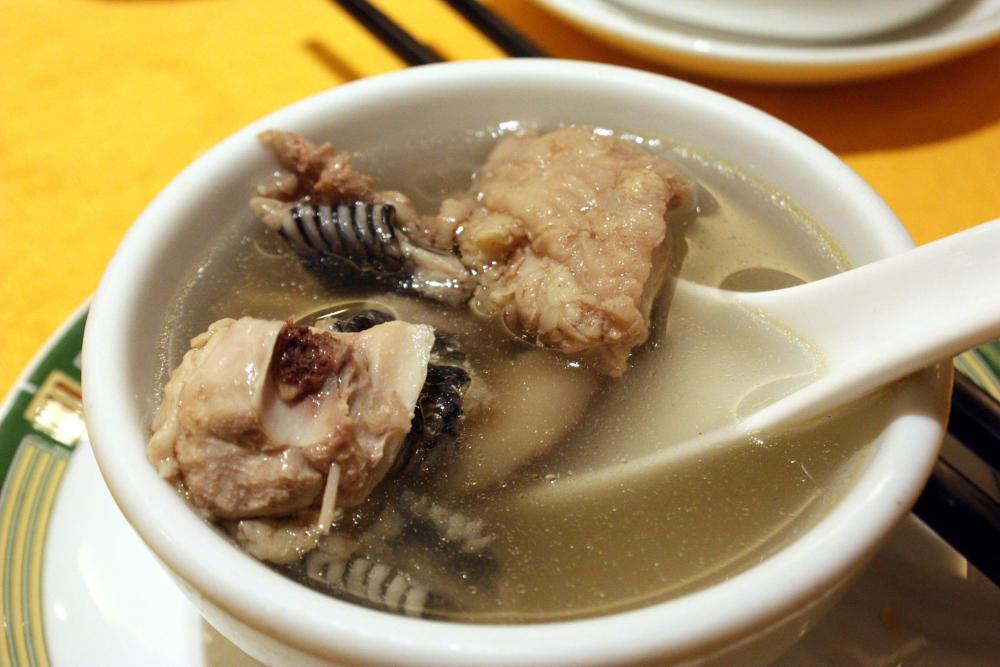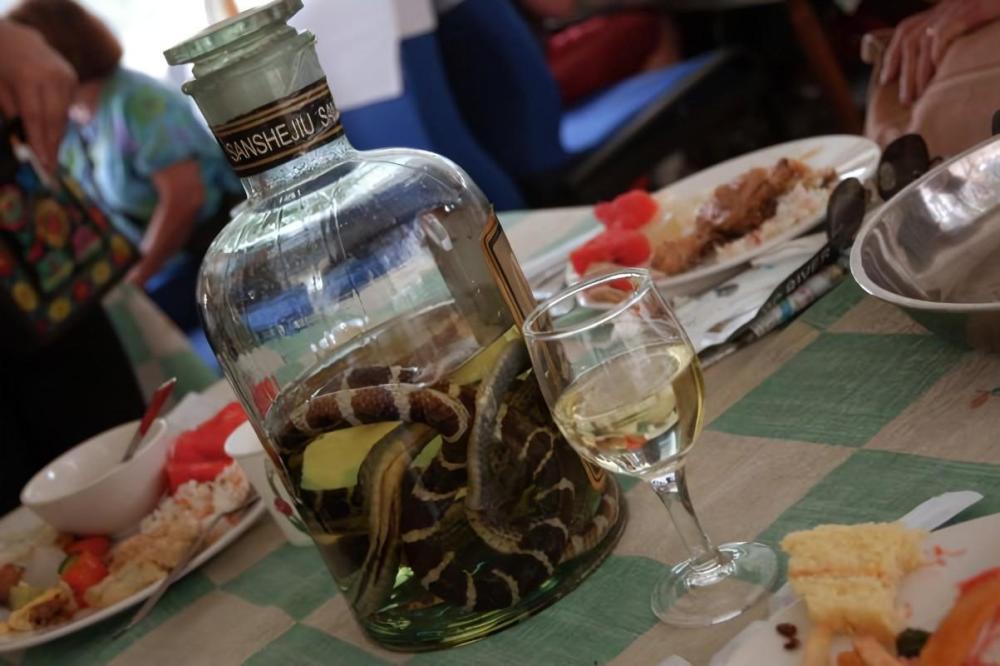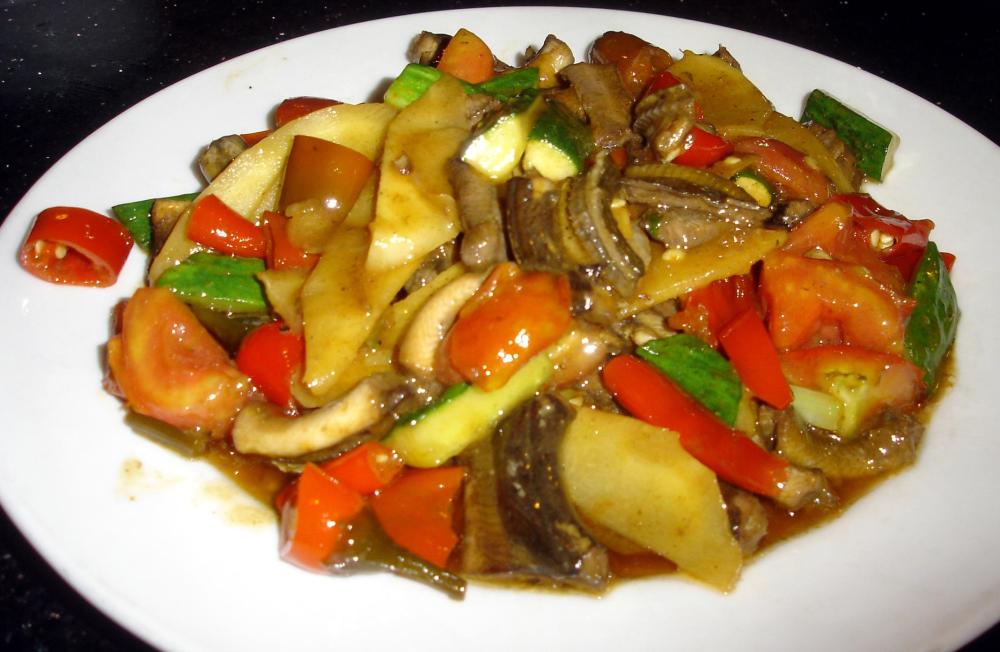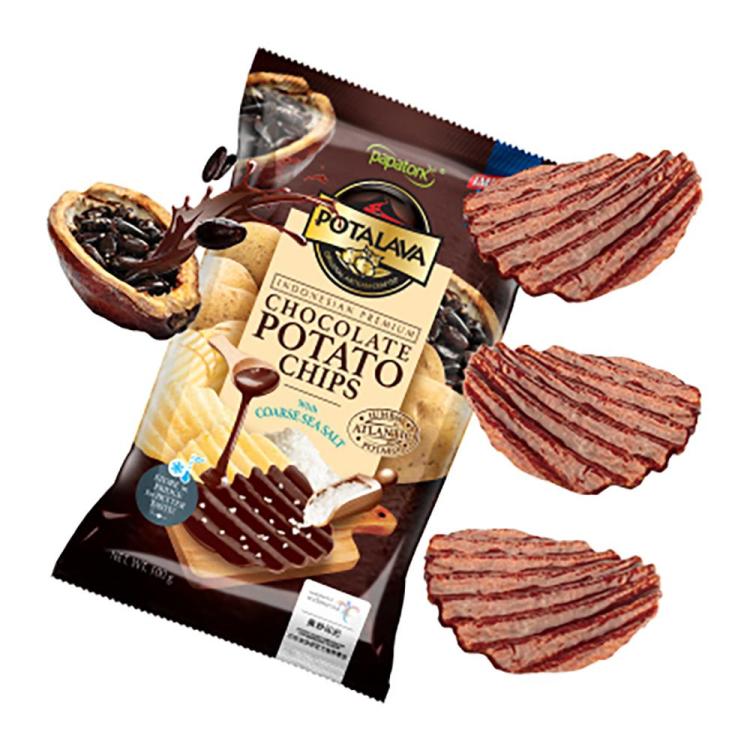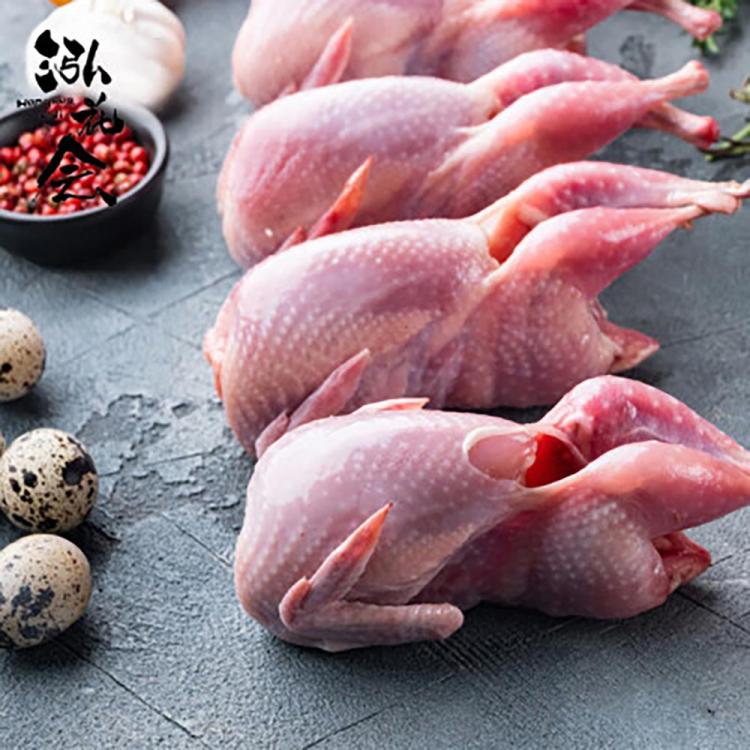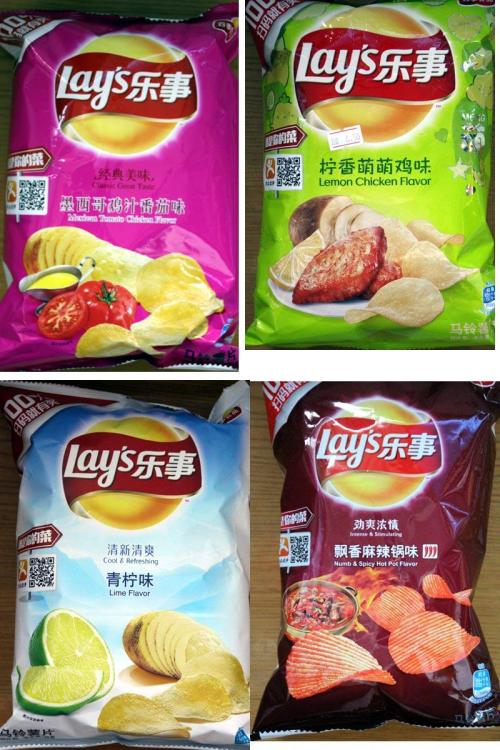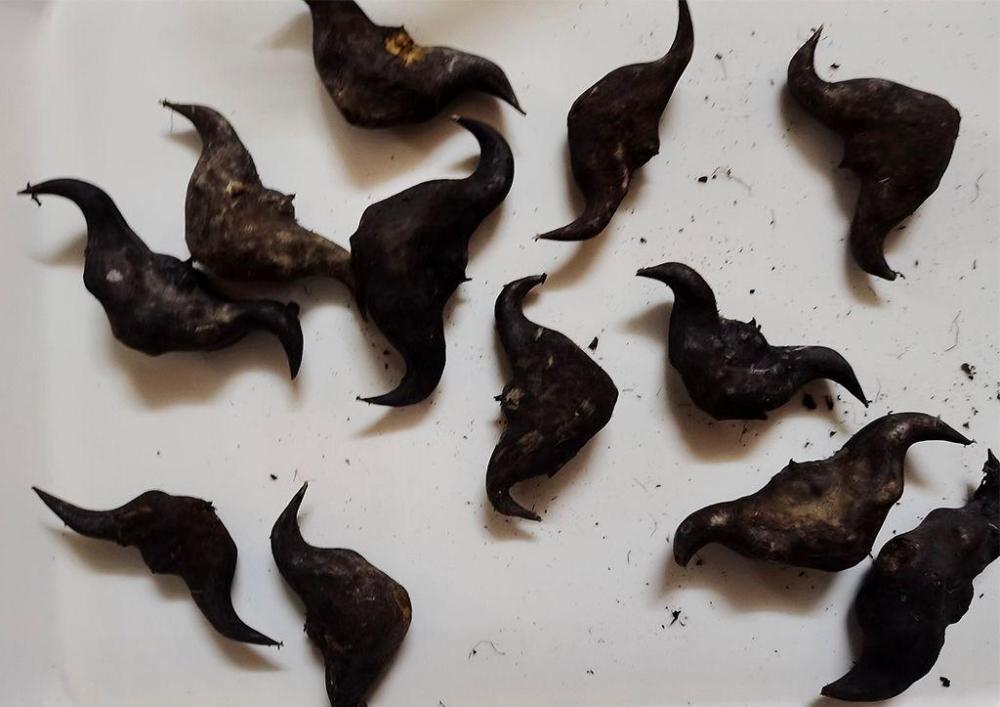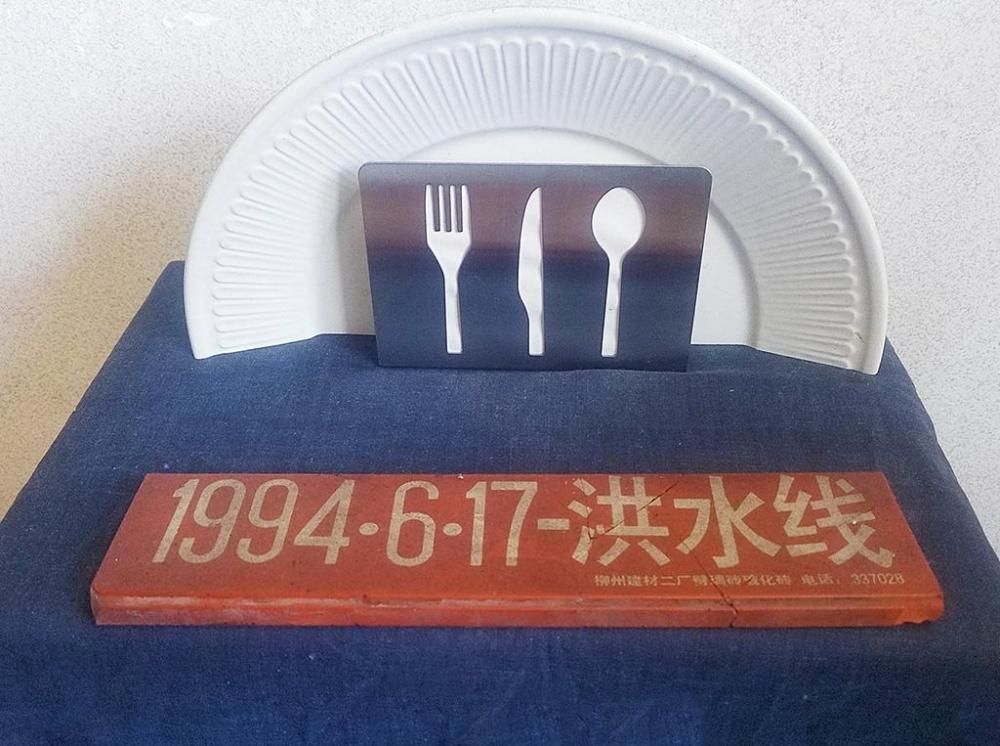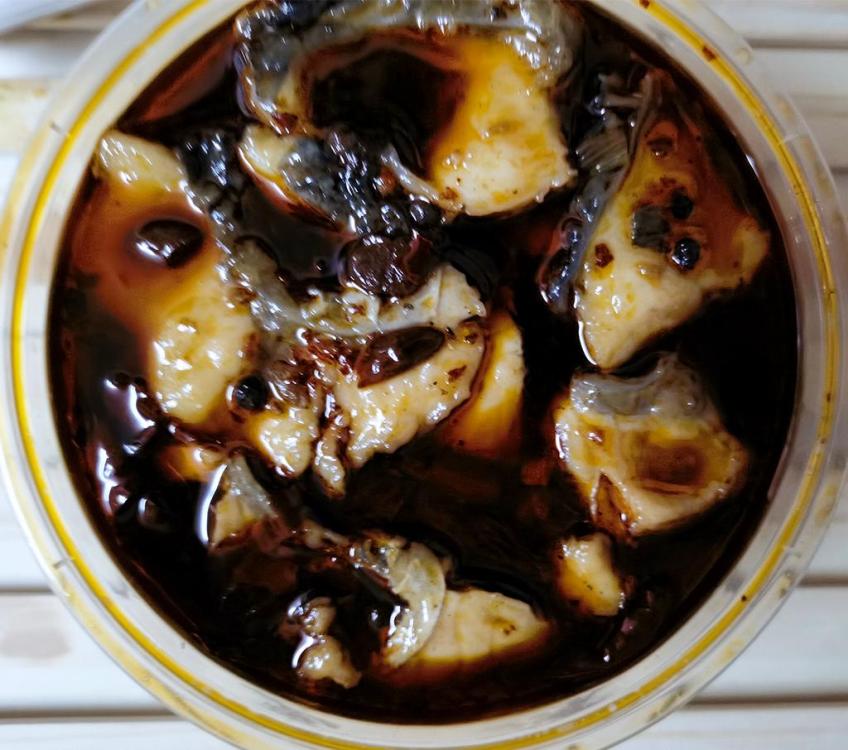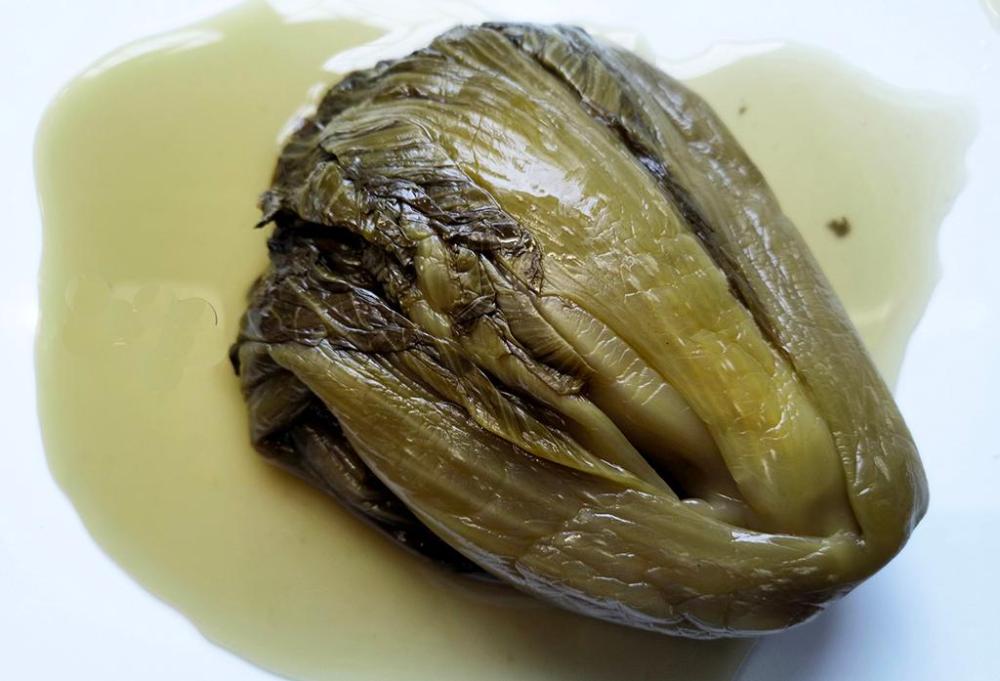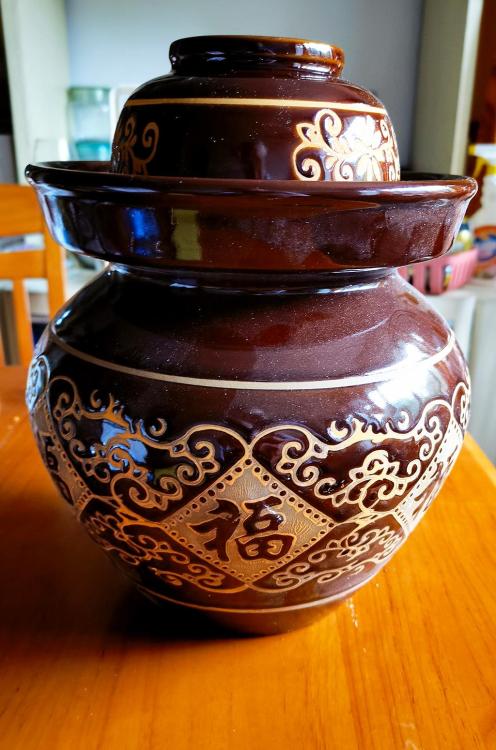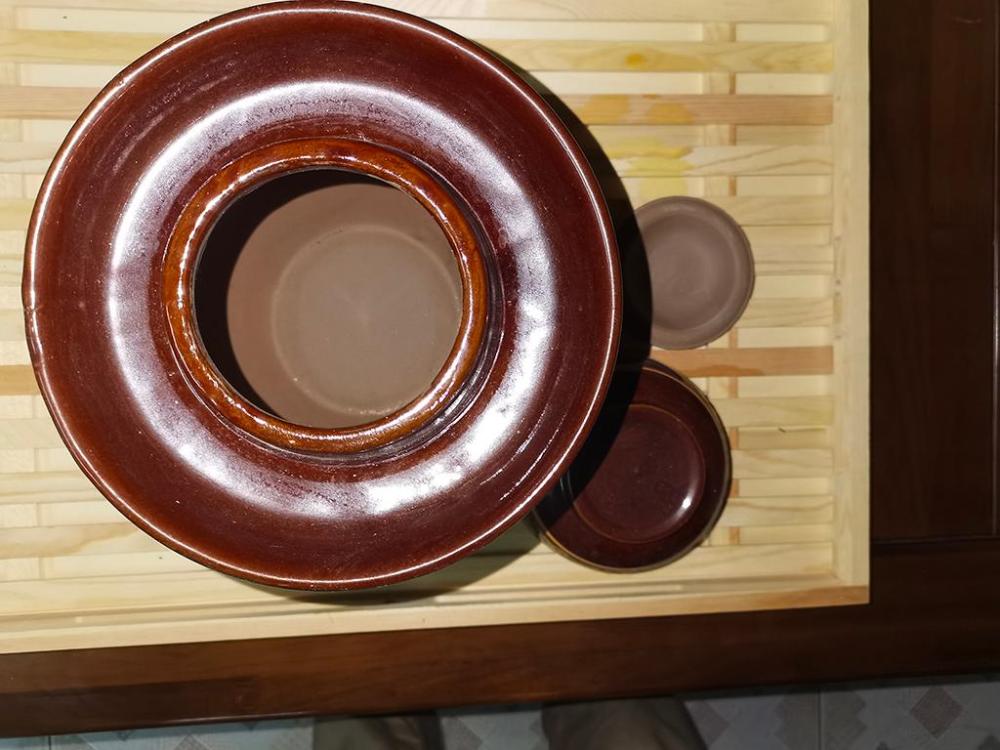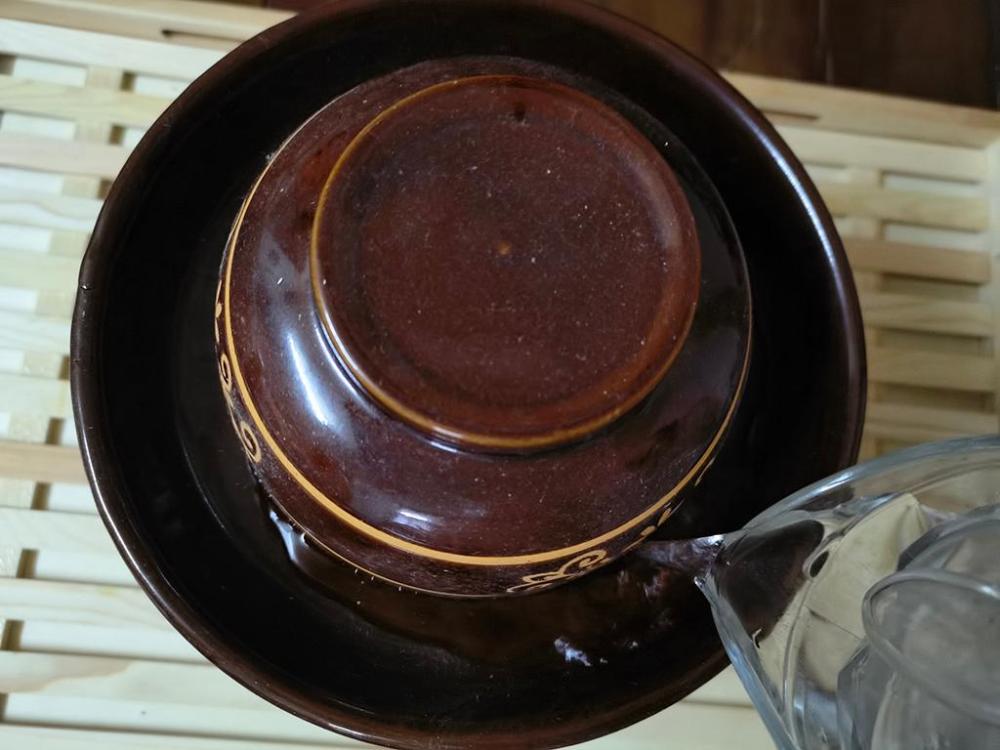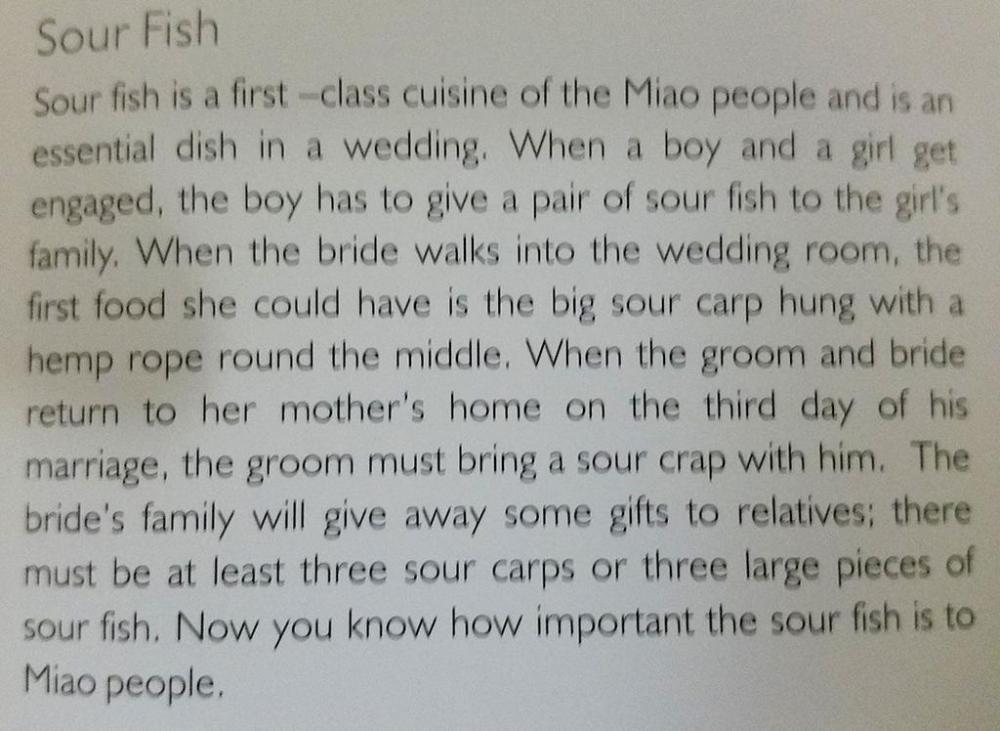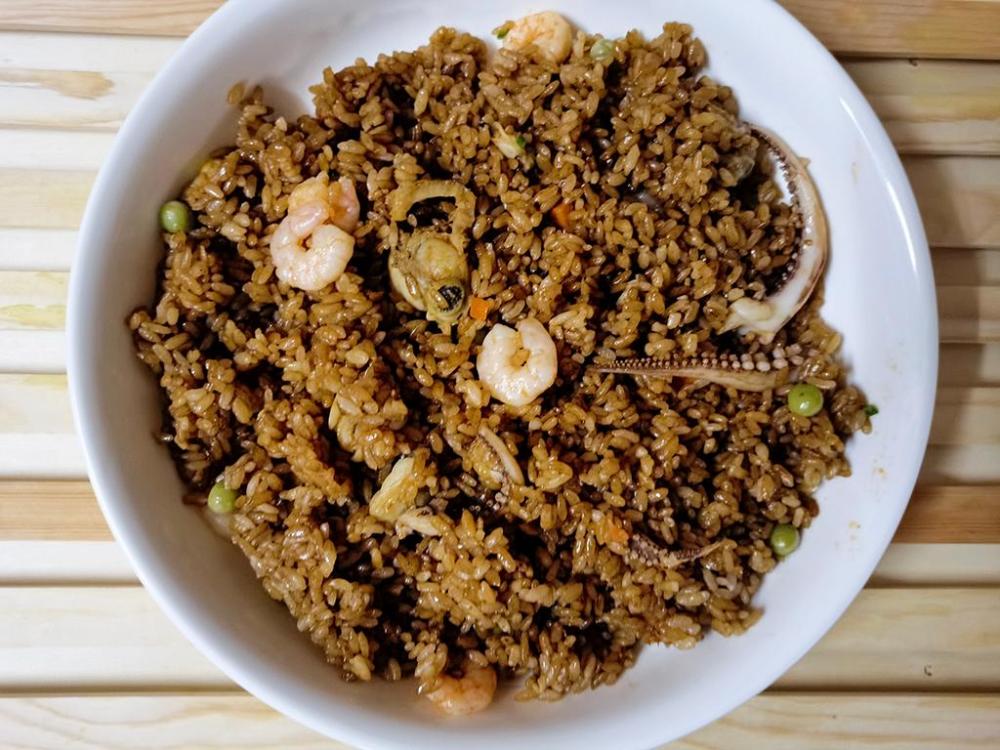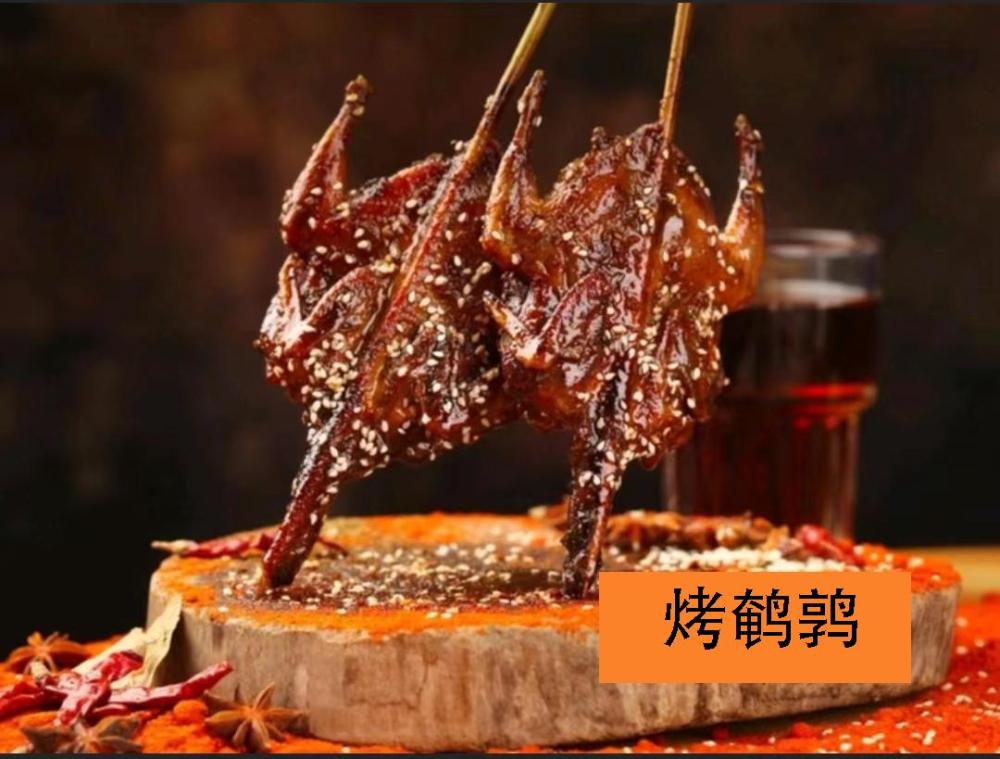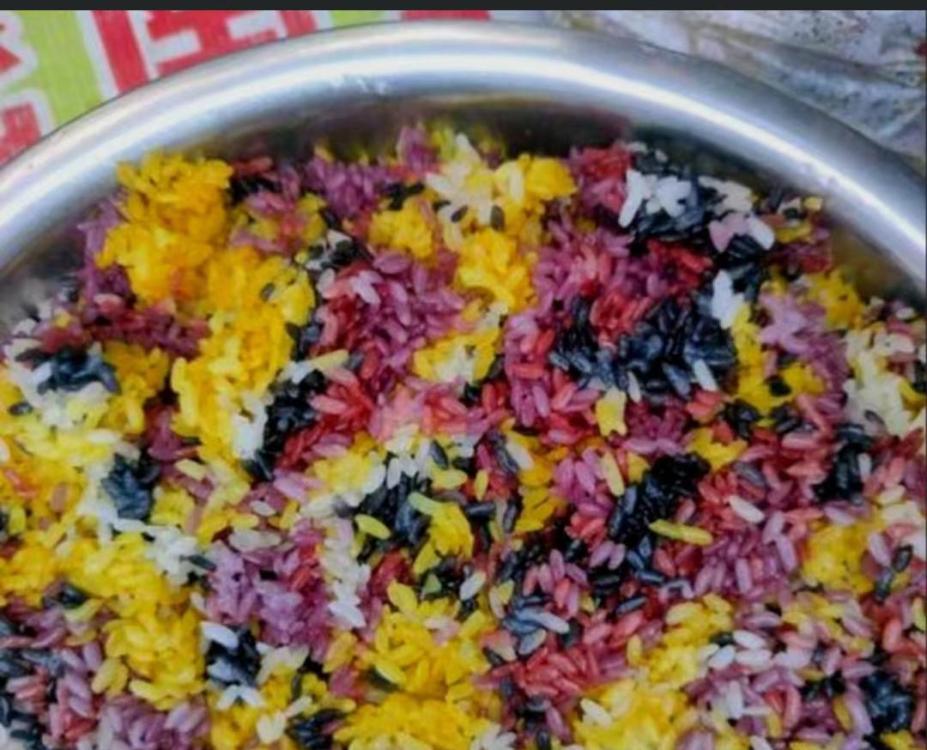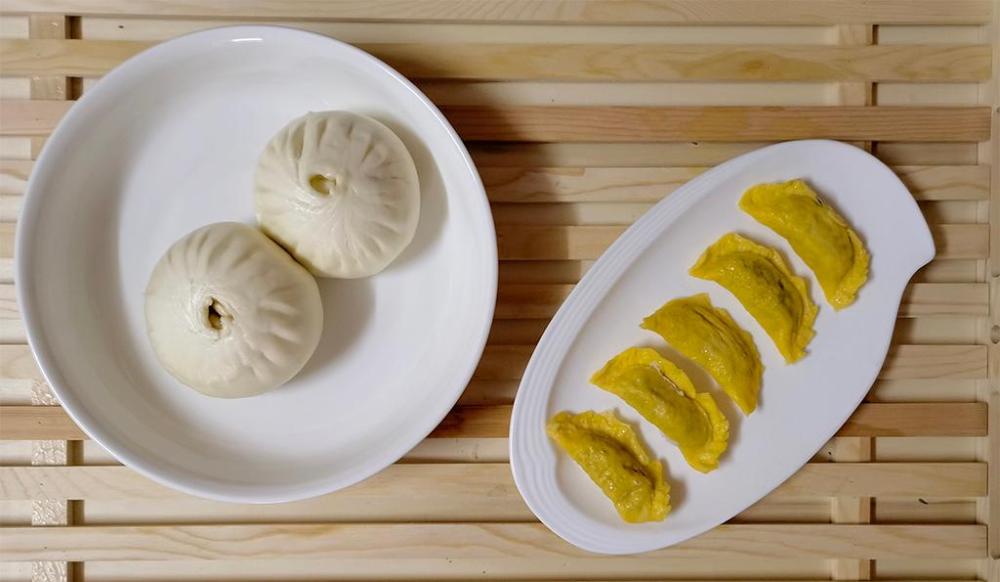-
Posts
16,675 -
Joined
-
Last visited
Content Type
Profiles
Forums
Store
Help Articles
Everything posted by liuzhou
-
Dinner: Steamed pork with roasted glutinous rice crust, pig's ears with green chillies, water spinach and steamed rice. Cordycep and chicken soup.
-
10. 鸭杂 (yā zá) Duck is the cheapest animal protein round these parts and duck is a huge part of Chinese culture. I’m not talking about the clichés like “Peking Duck”, good as that can be at its best. I’m thinking more everyday duck. The eggs are important. Salted duck eggs are everywhere. 皮蛋 (pí dàn) or century eggs, too are nearly always duck eggs. My boiled egg of a morning is usually a duck egg. Then there is the meat. I'm leaving that for a later post. My title of this section, 鸭杂 (yā zá) literally means ‘duck mixture’ but is also an abbreviation of 鸭杂碎 (yā zá suì) meaning ‘duck offal’. Duck consumption is very much beak to tail, leaving out only the feathers and the quack. Bits of duck I never knew existed (and the duck certainly didn’t) are considered delicacies. All over town there are small shops selling bits of duck. But first lets decide what kind of duck. China has over 30 different duck breeds. Some are thought of as egg layers; others as meat birds; yet others all rounders. Your Peking duck (actually known as 北京烤鸭 (běi jīng kǎo yā – Beijing Roast Duck) is almost always made using the confusingly named pekin duck breed. Yes, the etymology is related. This is the world’s most consumed duck, probably native to SE Asia and first domesticated some 2,000 years ago. The breed was introduced to the UK in 1872 from where it spread to the USA. It is a prolific layer as well as an excellent meat bird. Pekin Duck in Liuzhou Park However, round here a smaller breed is the first choice. I have attempted to get a positive identification of the breed, but everyone I ask gives me a different answer. The Chinese are not very good at species identification. They don’t even know what species of snail is in their city’s most famous dish (but I’ll return to that). Until I meet a qualified anatine ornithologist this picture will have to suffice. Anyway, back to the consumption of the bits. I’ll start with my favourite, then end up at the locals’ favourite (by far). 鸭心 (yā xīn) - Duck Hearts I do like these on toast of a morning. The locals, however, tend to braise them in soy sauce or with 5-spice and eat them as snacks. I can go there, too. Duck Hearts on Toast Proceeding through the bird at random we have: 鸭脖 (yā bó) Duck Necks These too are braised in soy or 5-spice and are gnawed on. Braised Duck Necks 鸭锁骨 (yā suǒ gǔ)- Duck Clavicle (Collarbone) These are braised with Chinese grain liquor (白酒 - bái jiǔ) and dark soy sauce then stir-fried with cumin. There is very little to chew on, but the locals so love a good gnaw. 鸭胗 - Stewed Duck Gizzards 鸭头 (yā tóu) - Duck Heads 鸭舌 (yā shé)- Duck Tongue These make for surprisingly good beer food. Then the favourite locally. People go ape for these. I've never seen the point. 鸭 掌 (yā zhǎng) - Duck Feet They are 'eaten' braised with chilli as pictured or in soups and stews and very often on top of Luosifen (螺蛳粉) Duck Feet with Pickles Duck Feet with Snails Can't make your mind up? Here is a nice plate of mixed duck offal bits and pieces - (鸭杂 (yā zá) Quack.
-
I like alligator (but not turtle so much) so I'd probably be happy.
-
Indeed gutted. The skin of most types is at least unappetizing if not actually inedible. I'm sorry but I've no experience of cobra hoods. The gall bladder is fed to dumb tourists in tourist trap Guilin for a steep price. The locals won't touch it.
-
I've spoken with a couple of people who shared that meal and they remember it as I do. The skin was texturally similar to fish skin but drier. No more gamy than the meat. It was a mild tasting snake. I'd love to find out exactly what variety but the restaurant is being rebuilt. I'm not even sure it's in the same hands. I may have to wait for someone else to get married!
-
Average round here.
-
Snakes are usually skinned before being cooked, but the snakes in that soup came with skin on. I don't recall any scales. Sorry. I didn't cook it, so I don't really know. Further investigation is required.
-
It's the snake's skin. Delicious.
-
-
-
-
9. 蛇 (shé) 蛇 (shé) – snakes are eaten all over Asia and Africa. Rattlesnakes are eaten in the USA , I’m told. I first ate snake in Italy in 1967. But no one eats more than the Chinese, especially in Hong Kong. And most of the snakes eaten in China (including HK) originate in Guangxi. About 250 km, 155 miles south-east from Liuzhou is the city of Wuzhou which is snake central. A snake repository has existed here for decades and snakes caught all over end up there for identification before being consumed. Originally the repository was set up to study snakes and to supply Cantonese restaurants, but recently it has been renamed and seems to have become a sort of snake theme park. A few years go, I made the acquaintance of a retired chef from one of the local hotel restaurants. Once a year, in retirement, he would take over the kitchen of a local restaurant and invite a bunch of people for dinner. The theme of his meal was always the same – snake. Eight or nine different dishes featuring different snakes. Utterly delicious. He has since passed away. Nothing to do with the snakes. Most people here are terrified of snakes. I tell them that snakes are generally shy and will avoid encounters with man, but if trapped or feel threatened may bite. And I tell them that they aren’t all poisonous, but they adopt the kill first and ask questions later strategy. One friend has no such qualms. Doesn’t stop people eating them, though In fact, the poisonous ones are considered the best (cooking renders the venom ineffective). Pythons are particularly desirable but I’ve also eaten cobras and boa constrictors. Snake soup is a feature of many wedding banquets as it is, for obvious reasons, thought of as a virility symbol, “guaranteeing” that the first born shall have a penis! Snake soup served at wedding banquet - The first-born was indeed a boy! Snakes are sometimes sold in the markets, where they are kept safely in cages. Rarely sold in supermarkets. I occasionally see people selling them on the streets just in sacks. Every year or two someone selling snakes gets bitten and dies. Caged snakes in my local market Snake is used in restaurants as is any other meat. Stewed, stir-fried, etc. Here is one stir-fried dish with Sichuan flavours as served in local restaurant. Also, snake wine is popular, especially with older generations (as it is throughout SE Asia). A venomous snake (or several) will be inserted into a bottle or jar of wine. The wine is then considered to have therapeutic effects on a range of complaints. Care is needed though. Many snakes are able to go into a catatonic state when stressed or trapped and can live for months on little air after seeming to be dead. They occasionally revive and bite wine drinkers. People have died! Chinese snake wine. Now that I think about it, I recall wine (or maybe grappa) with snake in it on that same 1967 Italian trip. Finally, No, it doesn't taste Ike chicken! It tastes like whatever type of snake it happens to be. Some are mildly flavoured; others can be quite gamy. P.S. I was born in the Year of the Snake which may have a bearing on my love of the meat.
-
I have discovered that the majority of quails here are used for pet food - particularly cat food. It seems the locals are only really interested in the eggs. My supermarket stopped stocking them about 5 years ago. That does mean, though, that quails are dirt cheap online. If I buy 20 quick frozen oven ready birds (intended for human consumption), they work out at 86 cents USD each. Buy only 10 and that rises to $1.28. Must check my freezer space.
-
-
Good help is indeed hard to find and I haven't found it yet! I need to get hold of a new batch of caltrops and experiment. Probably, I'll get a new tool thrown in which is just as well, because I just realised she may have binned that too. It isn't where I left it!
-
I presume you are referring to the water caltrops. If you can get them open and like fresh water chestnuts, then you are in luck. You can drop them into soups, stews and hotpots, but most people just eat them from the shell.
-
A double apology. First, I believe I posted this and was then hospitalised and largely out of contact. No one did supply a guess, which brings me to the second apology. Apologies for posting something so obscure. I guess you don't see many water caltrops round your way. I bought a bunch (they are similar in taste to water chestnuts but a different shape. That tool came with them and is intended to aid in opening the stubborn little shits! Water caltrops I never got to test it as the woman whom I pay to clean my apartment decided she didn't know what they were and binned them while I was in hospital. She also binned my dish draining rack (go figure?), my shrimp knife and at least one oyster knife along with a priceless* piece of artwork that I loved and treasured. My famous half a plate - gone! There may be other things missing. I'm not accusing her of theft; I just honestly think that she has no idea and anything alien to her must be garbage. Including me. I have now binned her. *Some spell that "worthless".
-
Dinner: 酸菜鱼 (suān cài yú) - Sichuan Fish with Pickled Mustard Greens. This is a classic Sichuan stewed fish special, but not so well-known abroad. It is popular throughout China. Most internet recipes suggest using catfish, which makes sense, but I've often had it with carp or tilapia. It is important to use a fairly firm-fleshed freshwater fish. This is a very spicy dish with facing heaven chilli peppers and copious Sichuan peppercorns, as well as doubanjiang. There is a reasonably authentic recipe here, should you wish to have a go at making it. The only difficulty may be sourcing the pickled mustard greens (which are the heart of the dish) but your local Asian market should be able to supply it. 酸菜 (suān cài) Pickled Mustard Greens I was wary of ordering it as it's normally a large dish meant for sharing, but they did a sensible sized one-man version and were generous with the fish. It was GOOD.
-
8. 酸肉和酸鱼 (suān ròu hé suān yú) Miao Maidens One of the more unusual gastronomic delights among the ethnic minorities is 酸肉和酸鱼 (suān ròu hé suān yú) - the pickled pork and pickled fish which are essential foods for the Miao and Dong peoples. These are sacrificed in their ancestor worship festivities and also served to entertain guests. Pickled fish and pickled duck are indispensable to wedding receptions, funerals, to welcome new babies etc. A large pickled goose is considered a great gift. More than half of the dishes in a Dong meal will be pickled. You could almost say, for the Dong, if it isn’t pickled; it isn’t food. The following is compiled from various descriptions by Miao and Dong friends so please take it as it comes. I have edited it slightly, but been careful to change nothing significant. For what follows, it is essential, I think, to show you and explain the pickle jars to which it refers. Luckily, I have two to hand! My other is plain glass, so harder to photograph. This jar can contain 5kg of water (1⅓ US gallons), but they come both smaller and much larger. Like most of these jars, it is in three parts: the main container; an internal lid and an external lid. The neck of the jar has a reservoir into which the external lid fits. The reservoir is then filled with water forming an airtight seal. Simple but effective. Pickle Jar Internal View and Reservoir Space With Internal Lid With External Lid and Water to Seal The story: The pickled pork comes in bright colours: the skin is yellow, the fat is milky white, and the lean meat is dark red. Each piece of meat has a few grains of rice or pepper attached, and has a fragrant taste. The skin is crisp, the meat is fresh, the pickling is moderate, and the aroma is pervasive, but pleasant. It tastes refreshing and has no greasy feeling. When eating, the diners sprinkle the pickled meat with dry spice powder. Pickled Pork Cooking Methods 1. Put the raw meat with skin on a charcoal fire. It's better to use pork head meat and remove the bones. Burn the skin and scrape away the blackened results with a knife. The purpose is to remove hair and dirt. Do not scrape with water. After scraping and the skin is golden yellow, then cut into thin slices and placed in a pot. Pour prepared salt, pepper, saltpetre, and dried glutinous rice into the pots of the meat and mix evenly. The usual mix is 40g salt, 25g peppercorns, 10g saltpetre and 100g glutinous rice for 500g fresh pork. 2. Put the washed pickle jar upside down with the mouth of the jar down, and use the smoke from the embers to smudge the jar for 2 to 3 minutes, so that the smoke flavour in the jar is lingering, and then the jar is placed in a positive position. Squeeze the pork meat with the hand and then put a piece of burning red charcoal into the jar on the pressed pork noodles. At the same time, add the jar cover and seal it with water. Place it in a cool and dry place and pay attention to always keeping the jar sealing water sufficient. When the pickling is mature (usually 10 days in summer and two weeks in winter), you can open the jar and eat the meat. 3. Notes A. When the jar is installed, it is not advisable to overfill with meat. It is necessary to leave a certain space. Generally, the meat surface should be 2 to 3 inches from the mouth of the jar; B. During the period of pickling, the lid should not be opened, otherwise air will enter and the meat will be mildewed; C. After removing any food, you should cover the jar quickly and keep the water in the tray so that it is always in a sealed state. Generally, the maximum storage time of pork in the jar after opening the lid is about 3 months. I've posted this before, but it is both informative and amusing (unfortunate typo). Note: 酸 (suān) means both 'sour' and 'pickled'. I prefer 'pickled' for foodstuffs, but I often see it translated as 'sour', as here. Pickled Fish For more on Miao and Dong people and their food see these two topics: and
-
Last night I ordered some seafood fried rice. It doesn't look like much, but it was very good. Plenty of shrimp, squid and fat juicy mussels. One to repeat.
-
No. There is only about a teaspooon of filling in each dumpling. The pork is ground (actually chopped) to a very fine paste and it cooks very quickly.
-
I saving this for the Guangxi Gastronomy topic, but it fits here, too so. A Chinese treatment - 烤鹌鹑 (kǎo ān chún) - Grilled Quail. Butterflied, generously sprinkled with cumin and chilli powders and grilled over charcoal - finished with sesame seeds. A popular late night snack sold on the streets.
-
7. 糯米 (nuò mǐ) As in the rest of southern China, the staple food in Guangxi is rice (Northern China tends more to wheat.) So, you will find that the majority of noodles here are rice noodles (米粉 - mǐ fěn*), although we can buy wheat noodles, too. The standard expression 你吃饭了吗 (nǐ chī fàn le ma), literally meaning ‘have you eaten rice’ is used as a greeting – it isn’t an invitation to dinner. Nor are you expected to answer with a list of what you have eaten in the last 24 hours, any more than "how are you?" is an invitation to list every disease you have ever suffered or imagined suffering. The ethnic minorities, including the Zhuang and especially the Miao, Dong, Yao, Mulam, Maonan etc favour 糯米 (nuò mǐ) which is glutinous rice, also known as ‘sticky rice’. Like all rice, glutinous rice contains two starches: amylose and amylopectin in varying proportions. Glutinous rice contains higher amounts of amylopectin which gives it its glue-like nature. NOTE: Rice, sticky or glutinous or otherwise does not contain gluten! The names are similar simply because gluten is also sticky. So is maple syrup but I don’t see people avoiding that! Celiac people can eat rice without fear! Contrary to much of the wisdom on the internet, glutinous rice comes in both long and short grain types, although the latter is much more common. As well as being a staple, eaten with every meal, glutinous rice is used in festivities and at weddings etc. The dish below, 五色糯米饭 (wǔ sè nuò mǐ fàn) – 5-colour glutinous rice - is a favourite at festivals. Some of the rice is coloured using vegetable dyes; some (purple and red) are natural. I first ate it at a wedding in a Dong village near Liuzhou city. The glutinous rice is also used to make rice wine with which to prolong the celebrations! It is also used in the manufacture of Shaoxing wine, etc. * 米粉 - mǐ fěn is often mistranslated by computer translation systems as 'rice powder'. It is true that 粉 (fěn) can mean powder, here it is refering to powdered rice (i.e. rice flour) which is used to make the noodles, so 米粉 is kind of an abbreviation.
-
Pork, egg and bread for breakfast. What 's wrong with that? 肉包 (ròu bāo) - Pork baozi and 蛋饺 (dàn jiǎo) - Pork dumplings with egg wrapper. The danjiao are similar to jiaozi, but the wrapper is a tiny omelette (ya boo hiss to those show-offs with their one egg omelettes. These 5 dumplings used two eggs between them and there was some leftover! Half egg omelettes!) They are made in a ladle held over the gas burner. It is filled with egg and briefly heated so that the egg in contact with the metal begins to set, then the rest of the egg is poured off to be used for the next one. When the wrapper is almost fully set, the filling is added and the wrapper folded. Flip the thing over to finish. The whole cook takes seconds. Popular as a dim sum 点心 (diǎn xin) item round here. Or served in soup.






